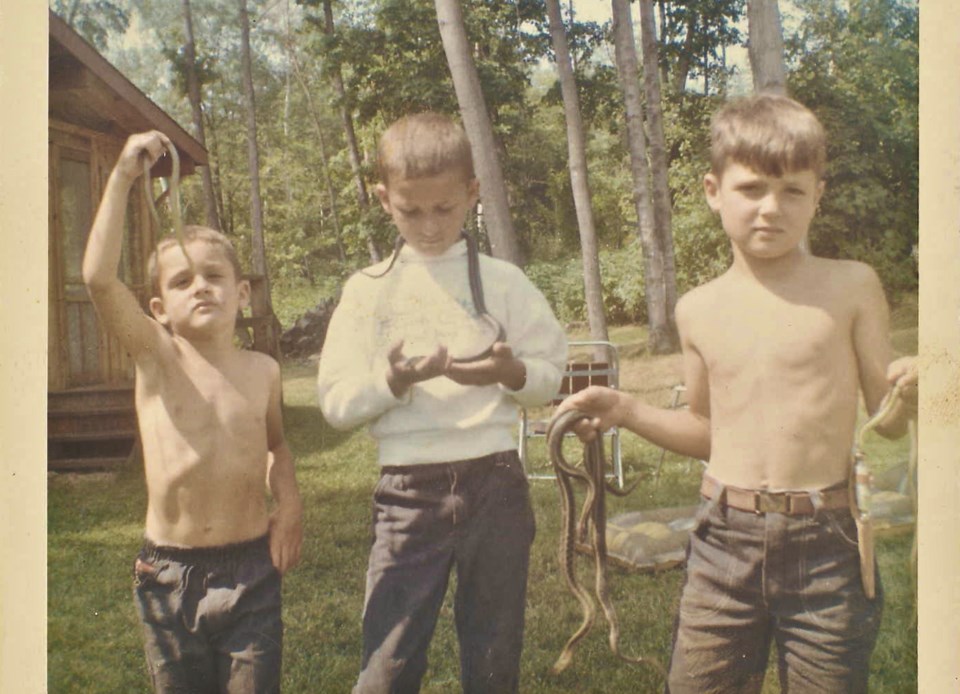Being a biologist isn’t something you usually need to defend, or that gets called out in a derogatory way. But it is the case that fewer politicians, government institutions or other systemic orthodoxies outside of scientific or naturalist circles actually want to know what you know. Largely because you will supply information that’s bad news and creates a conflict—an inconvenient truth, as it were. Yet, despite its flagging utility in today’s greed-and-entitlement addled world, I like knowing what I know. As well as recalling the path that led there. On a warm summer day in Whistler, nothing pulls me back to the halcyon days of childhood like recalling how nature found me.
When my family moved to Don Mills in the 1960s, the Toronto suburb was making waves as Canada’s first “planned community.” A paragon of urban organization, the ’hood most came to know from textbooks was an urban-rural quilt of undeveloped lots, overgrown pasture, and deep, dark ravines where tiny streams bubbled toward the coffee-coloured Don River. The Don was no Amazon, but its bramble-clogged valleys were my personal jungle, green tendrils lapping a nascent concrete mosaic.
Thick forest still edged our street, continuing northward, we imagined, to Hudson Bay. And, for the first few years, it indeed felt like we lived on the edge of something approximating wilderness: a parade of displaced deer, fox, raccoons, rabbits and birdlife was welcomed by cheering children weaned on a diet of anthropomorphized storybook animals. Paradoxically, those same animals were despised by the books’ suppliers—parents who’d spent their life savings on neat little homes with manicured grounds that a bevy of bewildered wildlife was now chewing up.
But that march was heaven-sent for me, as I crouched against cold metal window wells scooping out toads that tumbled in with regularity; hung speechless over the handlebars of my bike, eyeing a northern brown snake coiled on a roll of cedar snow fencing; and, in an almost mystical event, saw my first leopard frog, a doomed creature sitting iridescent in a shaft of light by the only remaining puddle in a rapidly vanishing ravine.
The encounters moved beyond wide-eyed observation as my brothers and I were bundled off to conservation areas to run wild while my parents read books and ate boiled eggs. When it was time to leave, they’d pry us soaking and reeking from the creek or brush, along with a bounty of crayfish, water bugs, frogs and salamanders. Animals roamed and fouled the car on the ride home; our laundry was fouler still.
Looking back, the cliché of a grasshopper in a jar was an inelegant experiment in desire. Not desire to possess an organism, per se, but to possess knowledge of it. Like most kids, we hung onto things because we were unable to differentiate between the two. Instead of suggesting that more might be gleaned by tipping the jar’s contents back into the soup of the wild, our parents simply tolerated a garage brimming with animals we had no idea how to care for. It would take me a while to grok the bigger picture.
In the summer of my sixth year, I spent several weeks at day-camp. I have only the dewiest, most translucent memories of Camp Mil-da-la-ca’s watery juice, soggy cookies, forced sing-songs, faux campfires, insipid games, dyed feathers, and braided plastic bracelets. One memory, however, burns bright as the day it happened.
Mil-da-la-ca was wedged between the newly opened Don Valley Parkway and the base of the valley’s western slope. A bus dropped kids on a street above, where counsellors ushered them down a trail through towering oak and maple to the valley floor, which levelled onto grassy former farmland punctuated by a few crabapple trees.
On a furlough from bracelet-making one day, I found myself angling toward the cauliflower shade of a large, twisted crabapple in the centre of camp. As I approached the ageing arbour, something moved sharply in the periphery of my vision. I looked, but whatever it was had stopped, vanishing completely. I took another step and it moved again, but all I caught were blades of grass bending right and left before it disappeared; I held still, scanning the ground, unaware that the key to an animal’s crypsis was the very immobility I was encouraging.
It was a dance that would repeat itself a thousand times before I even reached puberty; a School of Stealth that became so deeply ingrained in my neural patterning that to this day the unmistakable susurration of something sliding through grass or leaves will stop me in my tracks. Meanwhile, I was learning a valuable lesson from an invisible teacher. The questions my naïve senses struggled to answer in those few seconds opened up a dialogue with nature that blossomed into a lifelong conversation. The defining turn onto a long and winding road of study and writing about everything from biodiversity loss to climate change to the folly of old-growth logging started with a visual puzzle under an apple tree.
At the time, however, I understood only this: if I moved, whatever was hiding would reappear. So I took another step. A black band sprang from the grass and raced toward the tree. And with all the lobotomized bravado of a little boy, I dove for it.
Leslie Anthony is a biologist, writer and author of several popular books on environmental science.




